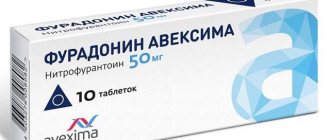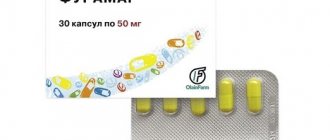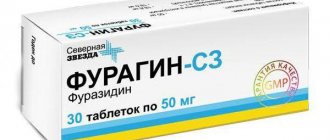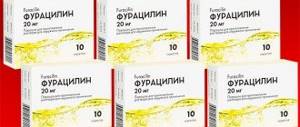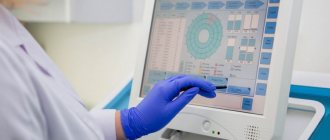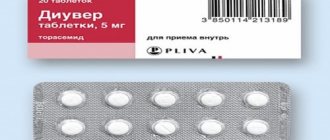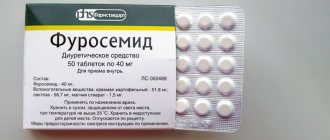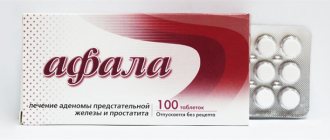Furagin and Faramag are pharmaceuticals with pronounced antimicrobial activity. To understand which is better: Furagin or Furamag, you should consider in more detail the basic information of the two medicines.
These drugs are based on the substance furazidin. This is a synthetic derivative of nitrofuran with slightly higher activity against pathogenic flora of the urinary organs. The chemical is active against cocci and rods.
Both of these medications contain 50 mg of the active ingredient, which makes them identical in terms of pharmacological effect. In this case, what is the difference between Furagin and Furamag?
Additionally, Furamag contains magnesium carbonate, which improves absorption.
pharmachologic effect
Furagin is available in tablet form, so it is taken with water, or an antiseptic solution is prepared. Once the tablet is swallowed, it bypasses the esophagus and stomach. The drug is absorbed in the small intestine: it is first absorbed into the blood, after which it enters the kidneys unchanged - there furazidin begins to fight pathogenic microorganisms. It is important to note one characteristic of the drug: the concentration of furazidine after it enters the lymph does not decrease for a long time. This feature prevents the spread of infection through the bloodstream, which has a positive effect on recovery.
Furazidin remains concentrated for a long time, but is quickly eliminated from the body, so after some time it will be difficult to detect in the blood, although its residues will still be present in the urine. Thanks to its selective effect, the drug has a strong antiseptic effect on the source of infection - the bladder, and is therefore especially effective for cystitis.
Furagin-lect belongs to the pharmacological group of nitrofurans, which determines its effect on bacteria: the active substance of the drug destroys the membrane of pathogenic cells by blocking the respiratory chain and the Krebs cycle. Furazidin is capable of acting on a number of gram-positive and gram-negative microorganisms, but not all of their strains, so the drug should be prescribed by a competent doctor. Immediately after the start of treatment, bacteria release a smaller amount of toxins, which has a positive effect on the patient’s recovery. Symptoms of the disease practically disappear even before the end of the course, but drug therapy cannot be stopped until the disease is defeated. You can stop taking the pills after the permission of your doctor based on tests.
In addition to fighting bacteria that cause diseases of the genitourinary system, the medicine has a positive effect on the patient’s immunity as a whole, which makes it a valuable drug. It has been scientifically proven that furazidin provokes an accelerated production of white blood cells (leukocytes), which absorb bacterial particles.
The difference between Furagin and a number of other antibiotics is that addiction to it is excluded, since even long-term therapy with this antibiotic does not reduce the effect of the active substance.
There is an opinion that Furagin has the same effect as other urological antibiotics, but this statement can be refuted. Despite the similarity of effects, the active substance does not affect other organs, without causing suppression of the “native” microflora of the body. Therefore, there is no need to take immunomodulatory drugs and microflora restoration agents. Furazidin disinfects the organs of the genitourinary system, providing a narrowly targeted effect, and not a systemic one, unlike most antibiotics.
Composition and mechanism of action on infections
The action of both drugs is identical, although the composition of both is quite diverse.
Furagin is produced in the form of tablets. One tablet contains 50 mg of furazidine , as well as additional substances: starch, povidone, sodium sterate, lactose. Furazidin effectively affects the enzymes of infectious cells, which are carriers of hydrogen molecules, thereby destroying the metabolic processes inside the cells. The medicine is not addictive.
Furamag is produced in capsules and tablets. The composition contains furazidin and magnesium bicarbonate in equal percentages. Thanks to the second component, Furamag is perfectly absorbed in the body and has high stability in the acidic environment of gastric juice.
Excipients included in the composition: potassium carbonate, gelatin, iron dye yellow oxide, titanium dioxide, quinoline yellow dye.
What diseases does it help with?
Furagin-lect is widely used to combat diseases of the genitourinary system caused by pathogenic microorganisms:
- acute and chronic cystitis (inflammation of the bladder);
- urethritis (inflammation of the walls of the urethra);
- prostatitis (inflammation of the prostate gland in men);
- pyelonephritis (inflammation of the kidney tubules).
In addition to the direct treatment of ailments, Furagin is used to prevent and reduce the risk of recurrent disease. It is also a good remedy for preventing infections after urological surgery.
It is worth noting that Furagin-lect is used as a local antiseptic and treatment of diseases of the mucous membranes, eyes and upper respiratory tract. Thus, the medicine is used in the treatment of purulent wounds, infected burns, and skin infections. To prepare a disinfectant solution, crush 1 g of tablets and dissolve in 100 ml of water for injection. Then the solution must be treated with antibacterial filters, poured into a pre-cleaned glass container and sterilized.
Furagin price, where to buy
Furagin's price is on average about 200 rubles. The medicine is considered to be very affordable compared to analogues; this price of tablets for cystitis makes them a fairly popular remedy. This drug is often prescribed by doctors and is often sought after in pharmacies.
The price of Furagin in Ukraine is also quite affordable. On average it is about 65 hryvnia.
- Online pharmacies in RussiaRussia
- Online pharmacies in UkraineUkraine
- Online pharmacies in KazakhstanKazakhstan
ZdravCity
- Activetex fom therapeutic coating for healing without scars 10x10 n10 (furagin-sea buckthorn oil) Altex Plus
266 rub. order - Furagin tablets 50 mg 30 pcs. Olainfarm JSC
RUB 274 order
- Furagin tablets 50 mg 30 pcs. Northern StarNorthern Star JSC
RUB 163 order
- Furagin tablets 50 mg 30 pcs. OzonOzon LLC
RUB 181 order
- Furagin-Aktifur capsules 50 mg 30 pcs. JSC Obolenskoe farm. company
RUB 423 order
Pharmacy Dialogue
- Furagin-Aktifur capsules 50 mg No. 30Obolenskoye pharmaceutical pred.
RUB 413 order
- Furagin tablets 50 mg No. 30 Obolenskoe pharmaceutical company.
170 rub. order
- Furagin tablets 50 mg No. 30Ozon LLC
175 rub. order
- Furagin tablets 50 mg No. 30Olainskiy HFZ
RUB 279 order
- Furagin-SZ tablets 50 mg No. 30Northern Star ZAO
RUB 169 order
show more
Pharmacy24
- Furagin 5 mg N30 tablets PAT "Kievmedpreparat", Ukraine
47 UAH. order - Furagin 50 mg No. 30 tablets AT "Olainfarm", Latvia
79 UAH order
PaniPharmacy
- Furagin tablets Furagin tablets 0.05g No. 30 Latvia, Olainfarm JSC
90 UAH order
- Furagin tablets Furagin tablets 50 mg No. 30 Ukraine, Kievmedpreparat OJSC
49 UAH order
- Atraumatic medical napkin with furagin 6x10cm Ukraine, Sarepta-Mediplast
16 UAH order
show more
Methods of application
If cystitis is suspected, the doctor often prescribes Furagin-lect. The scheme of action of the drug is prescribed in the instructions for its use, but only general data is given there, which may vary from patient to patient. The stage of the disease, the rate of development, the degree of spread to other organs, the general condition of the patient and a number of other factors significantly influence the possibility of using an antibiotic. In addition, it is necessary to undergo diagnostic procedures prescribed by the doctor. The dosage of the drug must be observed according to the instructions, which are included in each package of the product. It is not recommended to exceed the amount of medication due to unpleasant consequences. At the end of the first week of treatment, you need to visit a doctor to assess the patient’s condition and, if necessary, prescribe a second course of the drug.
The antimicrobial drug Furagin-lect is also suitable for children. The dose of the drug is calculated based on the baby’s weight: 5 mg of furazidine is required per 1 kg. Most likely, the tablet will need to be split before taking it so as not to exceed a single dose - you must follow all the instructions of your doctor.
Both adults and children should drink plenty of fluids during drug therapy to speed up metabolism and the rate at which bacteria are cleared from the urinary tract. It is also recommended to eat more protein foods, especially for children.
As a preventative measure, it is allowed to take 1-2 tablets of the medicine before bedtime to avoid getting sick and to avoid relapses.
The drug is contraindicated in patients with kidney problems, since it is necessary to regularly remove urine from the body.
During pregnancy and breastfeeding, taking an antibiotic is highly not recommended. The instructions for use state that the tablets are prohibited, but during experiments their negative effects were not established. Of course, no one has conducted experiments on pregnant women, so no one wants to risk the lives and health of patients. If during breastfeeding Furagin cannot be replaced with a safe drug, then the child should be transferred to infant formula for the duration of treatment in order to protect him.
The antibiotic is contraindicated in young children under 4 years of age and in patients with hypersensitivity to nitrofurans.
Reviews about Furagin
Reviews about Furagin for cystitis and other infectious and inflammatory diseases are very contradictory. The product has helped some, while others complain that they have not noticed any improvement. In addition, you can often find reports that there are side effects when taking pills. However, positive opinions about the drug are still more common.
Parents who gave Furagin to their children also left mostly good reviews. They note the rapid action and effectiveness of this product.
Drug interactions
The combination of an antibiotic with chloramphenicol, ristomycin and sulfonamides is not allowed - the risk of inhibition of hematopoietic function increases.
Nitrofurans and drugs that acidify urine (for example, ascorbic acid) should also not be taken together.
Furagin differs from other antibiotics in that drinking alcohol during therapy is not prohibited, but the effectiveness is reduced. In addition, alcohol depresses the kidneys, and this paired organ must work actively throughout the entire period of therapy.
Contraindications
- pathologies of the central nervous system;
- individual intolerance to the main active ingredient;
- general intolerance to nitrofurans;
- renal failure in the decompensation phase until the condition normalizes;
- liver dysfunction: hepatitis, cirrhosis, failure;
- pregnancy, lactation (safety has not been studied, so the issue is decided at the discretion of the attending obstetrician-gynecologist).
With caution: with deficiency of the enzyme G6PD (glucose-6-phosphate dehydrogenase).
What is the difference between Furamag and Furagin in this case? It is necessary to evaluate the general composition of the two products, the selling price, and the tolerability of the active component substance.
Danger of overdose
Symptoms of overdose usually appear in persons with impaired renal function. They appear:
- pain in the head;
- dizziness;
- psycho-emotional disorders in the form of depression;
- peripheral polyneuritis;
- allergies;
- nausea and vomiting;
- anemia;
- disorders of liver function.
To eliminate these symptoms, you must stop taking the medication, drink large amounts of clean water, take enterosorbents, and antiallergic drugs. In the future, treatment will depend on the symptoms; in complicated cases, it may be necessary.
Symptoms of pyelonephritis in women
The disease pyelonephritis of the kidneys appears when the infection rises through the urethra into the bladder, and then through the pelvis into the kidneys. This serious illness can become chronic. Treatment of pyelonephritis in women with drugs can take a long time. This disease is easier to prevent than to cure.
The reasons for the more frequent disease in women are the special structure of the urinary tract and the proximity of the anus to the genital organ and urethra. The most common causative agent of infection in pyelonephritis is Escherichia coli, which is easily released from the intestines and enters the urine excretion channel, resulting in the development of a serious illness.
So, the ascending route of infection into the pelvis, and then into the kidney tissue are diseases such as:
- cystitis;
- colpitis;
- urethritis;
- urolithiasis disease;
- colitis;
- long-term placement of a catheter to remove urine.
In addition to E. coli, infectious agents may include:
- enterococci;
- staphylococcus;
- enterobacters;
- Klebsiella;
- pseudomonas;
- Pseudomonas aeruginosa;
- pathogenic fungi.
Neglected treatment of pyelonephritis will turn into a chronic state of the disease.
But a descending hematogenous path of development of pyelonephritis disease also occurs if there is a chronic infection in the body. Microbes are introduced during the installation of a catheter or during vesiculourethral reflux - a violation of the outflow of urine and its further reflux into the renal pelvis, which increases the content of pathogenic microorganisms and inflammation.
The folk way to cleanse the kidneys! Our grandmothers were treated using this recipe...
Cleaning your kidneys is easy! You need to add it during meals...
- kidney stone disease;
- congenital anomaly of the genitourinary system and abnormal development of the kidneys;
- diabetes;
- HIV;
- spinal injury;
- surgery on the urinary organ;
- displacement or prolapse of the uterus;
- elderly age;
- multiple sclerosis;
- bone marrow disease;
- condition after chemotherapy and organ transplantation.
Some women have an abnormal position of the urethra, located close to the vagina, while the opening of the urethra is slightly open. In this situation, during sexual intercourse, existing bacteria freely enter the urethra.
In addition, pregnancy can significantly aggravate the chronic form of the disease and trigger an acute inflammatory process. Chronic inflammation can also be asymptomatic with complaints of malaise and fatigue.
Pronounced signs of the disease, acute pyelonephritis:
- severe back pain (both on one and both sides) or pain in the lower abdomen;
- high temperature, up to 41 degrees;
- change in the color and odor of urine;
- painful sensation when urinating;
- swelling of the face and hands;
- nausea and vomiting;
- weakness;
- irritability.
If the pain intensifies, urgent consultation with specialists and subsequent hospitalization is required.
Chronic pyelonephritis in women, signs:
- nagging, aching, dull pain in the lower back;
- heaviness in the back during physical activity;
- feeling of chills and coldness;
- frequent urge (mostly at night) to urinate;
- in the evening the body temperature rises;
- cramps in the abdominal area;
- severe headaches;
- increased blood pressure;
- swelling of the face, arms and legs;
- general weakness and malaise;
- nervousness.
You should visit a doctor and begin treatment for pyelonephritis, preventing the disease from becoming acute. A chronic disease can be treated over a long period of time and therefore does not require hospitalization. Quite timely visits to the urologist and nephrologist, physiotherapeutic procedures and compliance with the doctor’s prescriptions, as well as a drinking regime and a low-salt diet.
We suggest that you familiarize yourself with Biseptol for sinusitis
Ordinary water will greatly improve the patient's condition. The necessary balance of fluid in the body is maintained, the blood is thinned, and a large number of toxins and bacteria are eliminated due to frequent urination.
One of the important periods of life for a woman is pregnancy. It is very sad that 1-4% of the total number of pregnant women suffer from this disease. More often, these symptoms make themselves felt in the second trimester of pregnancy, while in the first and second periods of gestation, the expectant mother suffers from severe lumbar pain, while in the third period they become less intense. Complications of the disease include:
- anemia;
- renal failure;
- sepsis;
- premature birth.
The acute form of the disease does not affect the pregnancy itself, but the chronic form of the disease is severe, which can cause:
- toxicosis;
- premature birth;
- miscarriage.
Diagnosis of the disease
If symptoms appear in women, the doctor conducts an examination (palpation of the abdomen and tapping in the kidney area) and prescribes tests to carry out further treatment:
- urine analysis according to Nechiporenko;
- Zimnitsky's test detects a decrease in urinary density;
- bacteriological urine culture;
- blood test for leukocytes;
- blood test with indicators of creatinine, urea, ESR;
- Ultrasound of the kidneys (determines the size of the organ, stones, density);
- in more severe cases, CT scan, if therapy does not produce a visible result for more than three days (the density and condition of the vascular pelvis is assessed);
- radionuclide diagnostics.
Kidney pyelonephritis can be successfully treated with antibacterial agents and antibiotics. But unfortunately, pyelonephritis can be complicated by sepsis, which causes blood poisoning and puts the patient at risk of death.
After the examination, you can determine how to treat pyelonephritis. Signs of pyelonephritis in women and men will help you choose a treatment method: antibacterial or symptomatic. Antibiotics are prescribed for 5–14 days, with possible replacement after the result of bacteriological urine culture.
A better treatment result can be achieved by prescribing antibiotics (Ciprofloxacin, Ceruxim, Cefotaxime, Ceftriaxone) and antibacterial drugs (Furagin, Nitroxoline, Bactrim). And nitrofurans (Furagin, Furosemide, Cyston) are also prescribed.
For complications that are accompanied by allergies, antihistamines (Suprastin, Tavegil, Claritin) are prescribed. Immunomodulators and multivitamins are then taken.
If the disease is caused by pathogenic fungi, then Flucanazole and Amphotericin are prescribed. And also the doctor will observe with the help of CT, radiopaque urography and retrograde pyelography at what speed the fungus is cleared from the kidneys.
For sepsis that does not respond to drug treatment, a nephrectomy (removal of the affected organ) is performed. This is especially important in case of pyelonephritis, as an exception, death, with renal failure. Women with chronic pyelonephritis require long-term treatment.
Can children take medications?
Furagin and Furamag are used in pediatrics, but the main condition for successful treatment and the absence of side effects is compliance with the dosage and taking the medicine as prescribed by the doctor.
When treating a child, medications should be given with caution.
Both drugs are not without side effects, so treatment should be approached with extreme caution so as not to harm the child’s health.
In case of overdose of nitrofuran medications in children, acute toxic hepatitis and polyneuritis may develop.
